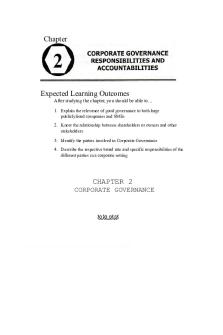Literal rule - Lecture notes 22 PDF

| Title | Literal rule - Lecture notes 22 |
|---|---|
| Course | Law |
| Institution | University of Liverpool |
| Pages | 2 |
| File Size | 55 KB |
| File Type | |
| Total Downloads | 3 |
| Total Views | 148 |
Summary
this lecture explains the literal rule...
Description
The literal rule of statutory interpretation should be the first rule applied by judges. Under the literal rule, the words of the statute are given their natural or ordinary meaning and applied without the judge seeking to put a gloss on the words or seek to make sense of the statute. Some examples of the literal rule: R v Harris (1836) 7 C & P 446 Fisher v Bell [1961] 1 QB 394
Whitely v Chappel (1868) LR 4 QB 147
Problems with the literal rule
There can be disagreement as to what amounts to the ordinary or natural meaning:
R v Maginnis [1987] AC 303
Creates loopholes in the law:
R v Harris (1836) 7 C & P 446 Fisher v Bell [1961] 1 QB 394 Partridge v Crittenden Leads to injustice: London and North Eastern Railway v Berriman
Creates awkward precedents which require Parliamentary time to correct
Fails to recognise the complexities and limitations of English language
Undermines public confidence in the law
Advantages of the literal rule
Restricts the role of the judge
Provides no scope for judges to use their own opinions or prejudices
Upholds the separation of powers
Recognises Parliament as the supreme law maker...
Similar Free PDFs

Literal rule - Lecture notes 22
- 2 Pages

Literal rule and mischief rule
- 9 Pages

The Literal Rule
- 1 Pages

Chapter 22 - Lecture notes 22
- 4 Pages

Chapter 22 - Lecture notes 22
- 4 Pages

22 - Lecture notes 1
- 14 Pages

282 lecture notes lecture 22
- 93 Pages

Lecture Notes 1/22
- 2 Pages

Lecture notes 22
- 28 Pages

Ch6 22.40.37 22 - Lecture notes 6-22
- 26 Pages

Ch7 22 - Lecture notes 7
- 26 Pages

Sector Model - Lecture notes 22
- 1 Pages

Amelia Lanyer - Lecture notes 22
- 3 Pages
Popular Institutions
- Tinajero National High School - Annex
- Politeknik Caltex Riau
- Yokohama City University
- SGT University
- University of Al-Qadisiyah
- Divine Word College of Vigan
- Techniek College Rotterdam
- Universidade de Santiago
- Universiti Teknologi MARA Cawangan Johor Kampus Pasir Gudang
- Poltekkes Kemenkes Yogyakarta
- Baguio City National High School
- Colegio san marcos
- preparatoria uno
- Centro de Bachillerato Tecnológico Industrial y de Servicios No. 107
- Dalian Maritime University
- Quang Trung Secondary School
- Colegio Tecnológico en Informática
- Corporación Regional de Educación Superior
- Grupo CEDVA
- Dar Al Uloom University
- Centro de Estudios Preuniversitarios de la Universidad Nacional de Ingeniería
- 上智大学
- Aakash International School, Nuna Majara
- San Felipe Neri Catholic School
- Kang Chiao International School - New Taipei City
- Misamis Occidental National High School
- Institución Educativa Escuela Normal Juan Ladrilleros
- Kolehiyo ng Pantukan
- Batanes State College
- Instituto Continental
- Sekolah Menengah Kejuruan Kesehatan Kaltara (Tarakan)
- Colegio de La Inmaculada Concepcion - Cebu


